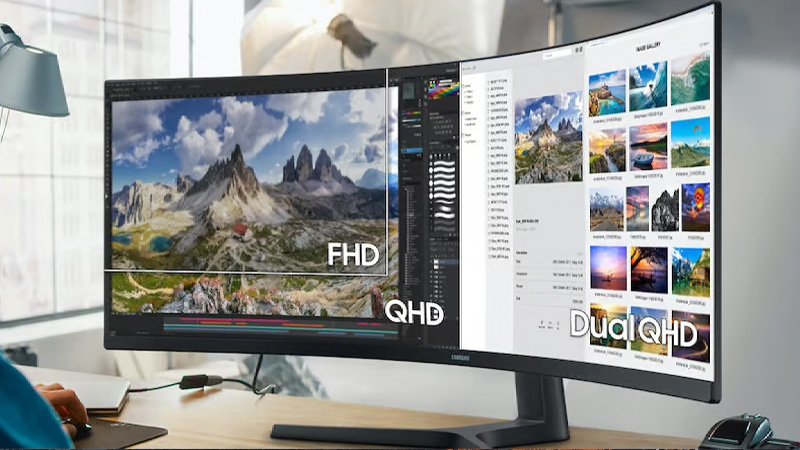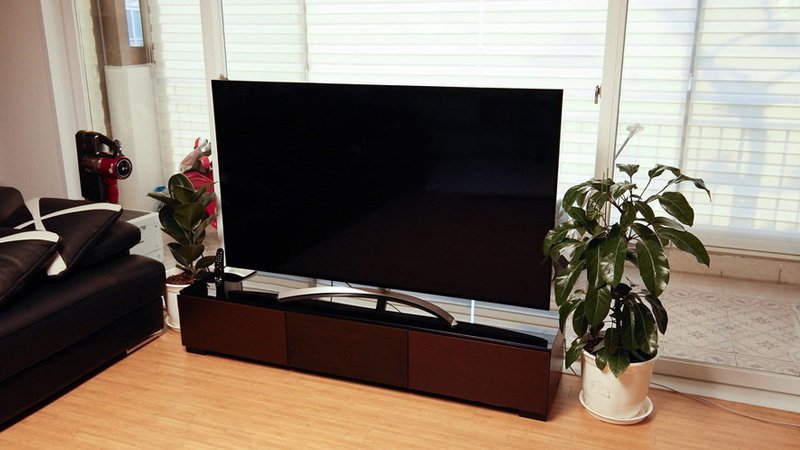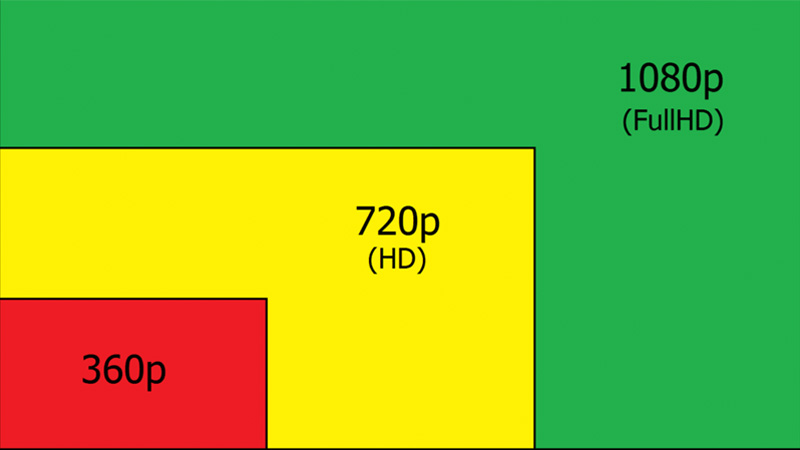In the early days of entertainment, display technology was mostly limited to the silver screen, projectors, and television. The preceding decades saw the development of display technologies of all sizes. With them came greater precision in detail, better and excellent clarity, and higher resolution for images and videos.
We will discuss the most advanced quality resolution: the FHD, QHD, and UHD. We will help you decide which of these three might be your best option.
1. FHD, QHD, and UHD: What Are They All About?
The terms FHD, QHD, and UHD refer to the image resolution as it appears on your display technology. By display technology, we refer not only to the previous incarnation, like a television set, cinema, or film projector, but to all types of mediums that can display content.
They can refer to PC monitors, smartphones, video walls, and all types of screens that can display images and videos. With digitization, most display technologies rely on advanced image resolution technology to deliver high-quality display content that is best for viewing and immersive experiences.
FHD stands for Full High Definition, which means it has a pixel count of 1920×1080. Commonly known as 1080P, FHD has become the standard for a high-definition resolution in a particular display technology, thus the term Full-High Definition.
QHD refers to Quad High Definition. Due to the number of pixels, 2560×1440, it has a notch higher resolution than FHD, hence called 1440P.
UHD, or Ultra High-Definition, is one of the latest and has the highest resolution of the three. It has 3840×2160 pixels and is commonly referred to as 4K because it approximates 4000 pixels.
The three dominate the display technology market and are used for various display contents. Despite the resolutions, you can optimize display content further for a more immersive experience using the appropriate technology. Higher resolution means better clarity, but it does not mean it is always the best option.

2. FHD vs. QHD vs. UHD: Pros and Cons
The three have all their pros and cons. Some might be of utmost importance, while others may be negligible and insufficient to sway potential consumers.
Full High Definition
High-definition came before FHD, but the term “high-definition” gained traction with FHD and became associated with 1080P. It has become the standard by which others are measured, and those that came after it were regarded as a great improvement towards greater resolution and clarity.
Over the years, it has become the standard for an enjoyable viewing experience. FHD offers many positives, which makes it relevant despite the challenge of later versions of high-definition display technology.
- Pros
● It remains the main resolution of choice for many. It is suitable for various applications and a perfect match for most media and display content.
● It is playable on nearly all devices: Most display technology created in the last twenty years can play and support FHD.
● If you want to upscale a particular display content, upscaling low-resolution videos and images to FHD will make more sense than upscaling to QHD or UHD. When you upscale, the display content loses some of its quality, and the more you upscale to a higher resolution, the more quality the display content loses.
● Due to its lower resolution, FHD is more energy efficient than QHD and UHD. It would help if you had less energy to operate an FHD device.
● It costs less than the other two. Since newer advanced technology initially costs more than the previous one, QHD and UHD command higher prices than FHD.
Despite many positives, there are some drawbacks to FHD.
- Cons
● Mediums using newer, advanced technology might be incompatible with FHD. This is true of some apps, such as those used by cinema, television, and photography professionals.
● They have been around for a long time, and as time progresses, QHD and UHD have become common. As technological innovation makes the higher technology cheaper, it will bring down the prices of WHD and UHD, making them available and pushing more people to embrace QHD and UHD as better alternatives.

Quad High Definition
A 1440P is a significant improvement from 1080P in clarity and precision. Thus, not a few consumers decide to take the middle road between FHD and UHD and gamble on QHD. QHD has a few positives vis-à-vis FHD and UHD.
- Pros
● It has better clarity and resolution than FHD, and with some display content, it can provide a better immersive experience.
● It is more affordable than UHD, and though more expensive than FHD, its prices have considerably decreased as time progresses.
● The higher resolution leads to better efficiency, allowing you to run other apps.
There are some things, though, working against QHD.
- Cons
● It is still more expensive than FHD.
● You need more advanced technology to run QHD. Some display technologies, therefore, may not be suitable for QHD, or they may not be able to optimize the enhanced viewing experience that QHD offers.
● Due to parts and advanced technology used to deliver high-resolution display content, it is less efficient in saving energy and, thus, more costly than the FHD.
Ultra-High Definition
UHD exhibits the highest resolution of the three. Approximating 4000 horizontal pixels, UHD has become synonymous with the term 4K. Many like UHD because of its sharper focus and finer details, making it above FHD and QHD in providing exceptional clarity. It is a great leap from the two because of its number of pixels.
- Pros
● UHD is the best in terms of clarity and resolution, and, with appropriate display content, can provide the most enhanced viewing experience.
● Many display contents, like Hollywood films, are better appreciated using UHD. You can see minute details, and the resolution allows for sharper focus, resulting in a more immersive experience.
● UHD is better for an immersive gaming experience. The technology and resolution required for most console and PC games perfectly suit UHD more than FHD or even QHD.
However, there are some drawbacks in choosing UHD over FHD and QHD.
- Cons
● Of the three, UHD is the most expensive. Its price makes it out of reach for most consumers, even those who want the most immersive experience from any display technology.
● You need technology that is on par with UHD. Whereas most processors and other components can run 1080P, that is not the case with UHD, which requires higher processors and different types of components to run.
● So many contents are still available in lower resolution formats. And though they may look great when upscaled into 1080P, that may not be the case with UHD.
● Netflix, YouTube, and other platforms, and some that display content shown in cinemas and televisions, may be of different quality when displayed in UHD technology. That is due to specific industry standards still in place regarding the said industries.

3. Which is the Best for You?
Your needs should be the primary consideration in determining which of the FHD, QHD, or UHD displays is the best. As such, numerous factors affect your choice of the cherished display technology that will give you that immersive experience and enhanced viewing pleasure.
Your Ideal Display Contents
What are you watching? Are you watching Blu-ray discs on your display technology or sports activities, where minute movements are essential for you, and sharper focus and finer details matter? Or are you watching those old movies, documentaries, and classic television shows from the throwback era?
You can optimize whatever media content you like to watch if you have the appropriate display technology having one of the three resolutions mentioned. UHD may be more appropriate for those who want sharper focus and attention to detail due to the advanced technology in creating the content.
QHD may also be a good option for those who want higher resolution but must operate within a tight budget.
For those who enjoy television shows and films that still use classic ratios and industry standards, FHD may be enough. This is especially true if you watch various content across all platforms. FHD, as we mentioned, is also more economical and efficient. It will save you a lot of costs.
For those into games, it depends on the type of game you are playing. Gamers who play new, advanced game consoles and PC games might have a better immersive experience using UHD or QHD. Many have preferred UHD because higher resolution means “richer texture” and more color, brightness, and illumination options.
For those playing classic, retro games, FHD might be enough. Upscaling technology enhances the gaming experience with retro games, and some may also be worth playing using QHD.
The Source of Display Content
Are you a consumer of one of those platforms on the internet that showcase different shows and media content or live-stream shows? Or are you still using the regular television broadcast from your local channels or cable provider?
Are you fond of watching DVDs? Do you connect your display technology to your gaming consoles, and if so, what type of consoles are you using?
All this matter because the source or the display content itself has its natural configuration and, as such, may be enhanced or naturally look excellent depending on whether you watch them in FHD, QHD, or UHD.
Those who watch content from social media platforms will have a more immersive experience watching it at a lower resolution. Thus, FHD is ideal for them.
Those watching movies and wanting to see every intricate detail will have the best immersive experience watching them from larger devices, like a giant-sized LED screen. QHD or UHD may be preferable.
Television shows and films conform to industry standards. Other platforms showing films, documentaries, and other shows have their own standards as well. Since most content is not yet available in 4K, the safe bet is that if you are into those things, you might as well go for FHD.

4. Give Us a Chance to Show
Balancing everything with your budget will give you the best deal possible. We at LEDSINO offer different display technologies, gadgets, and other items that can show content in FHD, QHD, or UHD.
Our rental displays, indoor displays and outdoor energy-saving displays offer different pitches and sizes, which can achieve different pixel requirements and show different display effects.
We ensure that whatever your choice, what you have will give you the best immersive experience and a fantastic viewing experience for your family and friends.
5. Final Thoughts
Most display technologies have an FHD, QHD, or UHD resolution. These resolutions are a vast improvement from low-resolution images and videos, resulting in a more immersive, exhilarating viewing experience for consumers.
But to maximize the display technology in optimizing your experience, you must choose what is best for you. That depends on the kind of consumer you are, the nature of the material itself, and the source of display contents.
But of those three options, at least one will provide you with what you want in terms of an immersive experience and aesthetic viewing pleasure.



